Table of Contents
Protecting Lavender from Root Rot
Lavender is cherished for its soothing fragrance, silvery foliage, and resilience in sunny gardens. But despite its hardy nature, lavender is surprisingly vulnerable to one silent killer: root rot. Often caused by overwatering or poor soil drainage, root rot can swiftly turn a thriving plant into a withered, lifeless bundle of stems.
Preventing root rot isn’t about being lucky — it’s about being proactive. Whether you’re growing lavender indoors in pots or planting it outdoors in flower beds, knowing how to prevent root rot is essential for long-term success.
This guide will walk you through practical, proven strategies to protect your lavender and help it thrive year-round. From choosing the right soil to monitoring environmental conditions, you’ll learn how to keep your plant healthy, aromatic, and disease-free.
Choosing the Right Soil and Pot for Lavender
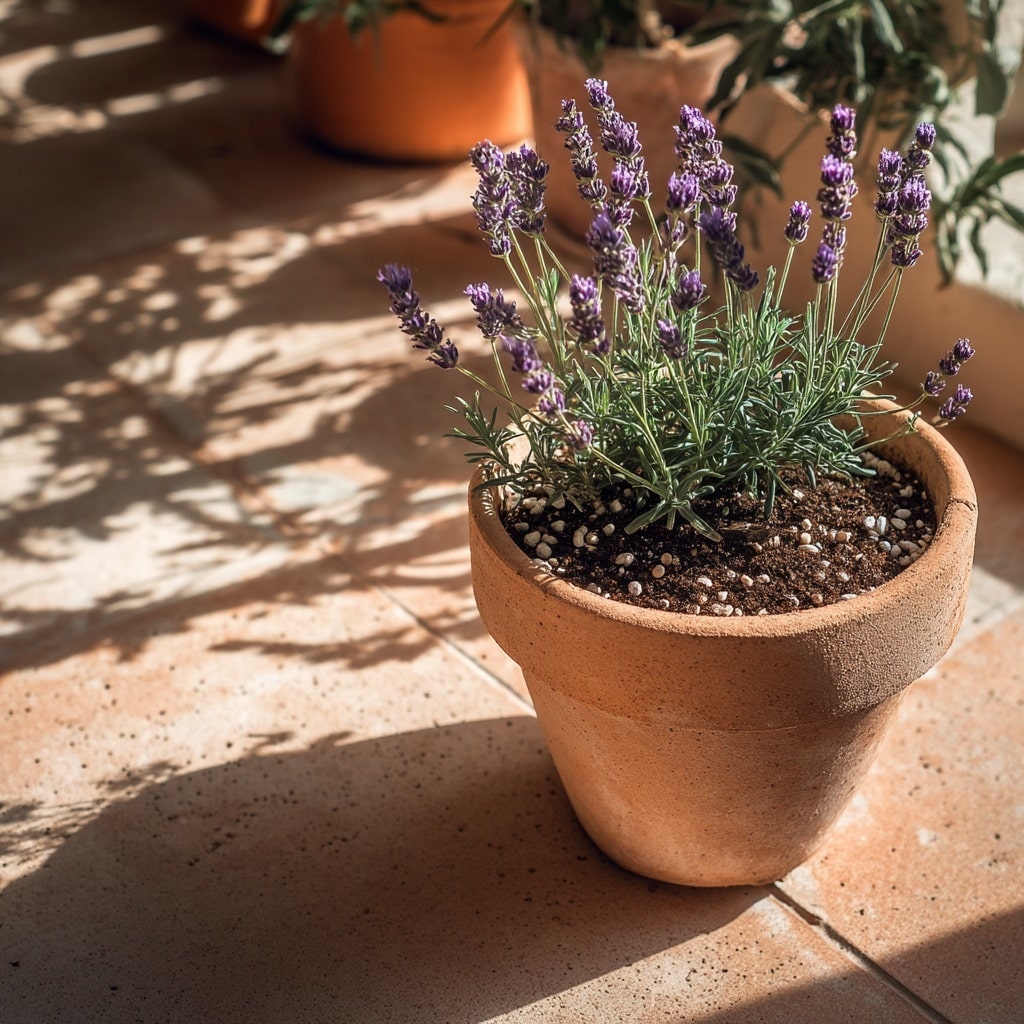
Getting the soil and pot right is one of the most important steps in keeping lavender healthy and root-rot-free. Since lavender naturally grows in the dry, rocky soils of the Mediterranean, it doesn’t tolerate soggy conditions. Poor drainage is often the root cause of fungal infections and rot.
Use Well-Draining Soil
Your lavender will thank you for planting it in fast-draining soil. Look for mixes labeled for succulents or cacti—these often contain sand, perlite, or pumice, which allow excess water to escape quickly. You can also create your own mix by combining:
- 60% potting soil
- 20% coarse sand
- 20% perlite or pumice
This blend mimics lavender’s natural environment and reduces moisture buildup around the roots.
Choose the Right Pot
If you’re growing lavender in containers, terracotta pots are a great choice. Their porous nature helps wick away moisture, keeping the soil dry between waterings. Always make sure your pot has ample drainage holes—at least one large hole or multiple smaller ones.
Avoid pots with built-in saucers or those made from plastic or glazed ceramic, which can trap moisture. Elevating pots slightly using pot feet or bricks can also improve airflow and drainage.
Bonus Tip
Some gardeners add a layer of gravel or broken clay pieces at the bottom of pots. While this is a debated practice, it can help prevent water from pooling near the roots—just don’t skip the well-draining soil.
Watering Techniques That Prevent Root Rot

Watering is where many well-meaning gardeners go wrong with lavender. This drought-tolerant plant prefers dry spells between drinks, and overwatering is the fastest route to root rot.
Water Deeply, But Infrequently
Lavender thrives on deep, infrequent watering. Rather than watering on a fixed schedule, check the soil first. Only water when the top 1 to 2 inches feel completely dry. This encourages deeper root growth and keeps fungal pathogens at bay.
During hot, dry months, you might water once every 7–10 days. In cooler seasons or humid environments, it could be less frequent. If your lavender is in a pot, drainage becomes even more critical—always empty saucers after watering to prevent standing water.
Use a Moisture Meter
A moisture meter takes the guesswork out of watering. Insert it into the soil near the roots to check moisture levels accurately. Aim to keep lavender’s root zone in the “dry” range before watering again.
Inexpensive tools like the XLUX T10 can help you avoid both under- and overwatering. They’re especially useful for indoor plants or when adjusting care during seasonal shifts.
Avoid Overhead Watering
Lavender doesn’t like wet leaves. Always water at the base of the plant, not from above. Wet foliage can promote fungal growth, which may spread down to the roots.
Environmental Control for Lavender Health

Environmental factors play a huge role in keeping lavender healthy and free from root rot. While this plant is known for its hardiness, it has specific preferences that, when met, dramatically reduce the risk of disease.
Prioritize Full Sunlight
Lavender needs at least 6 hours of direct sunlight daily. Without enough light, the plant becomes leggy, weak, and more vulnerable to moisture-related problems. Outdoors, choose a south-facing location. Indoors, place potted lavender near the sunniest window in your home—ideally south- or west-facing.
If you live in a cloudy or northern climate, consider supplementing with a grow light to ensure adequate exposure, especially in winter.
Keep Humidity Low
High humidity can encourage fungal growth, which increases the risk of root rot. Since lavender naturally thrives in dry climates, avoid placing it in bathrooms or kitchens where moisture lingers in the air.
Good air circulation is essential—especially for indoor plants. Avoid crowding lavender among other plants, and if necessary, use a small fan to keep air moving in stagnant rooms.
Temperature Preferences
Lavender prefers warm temperatures, ideally between 60°F and 85°F (15°C to 29°C). It’s hardy in USDA Zones 5–9, but if winters are harsh, potted plants should be brought indoors or protected with breathable materials like burlap. Avoid heat stress by shielding it from intense afternoon sun in very hot climates.
Fungal Infections and Treatment
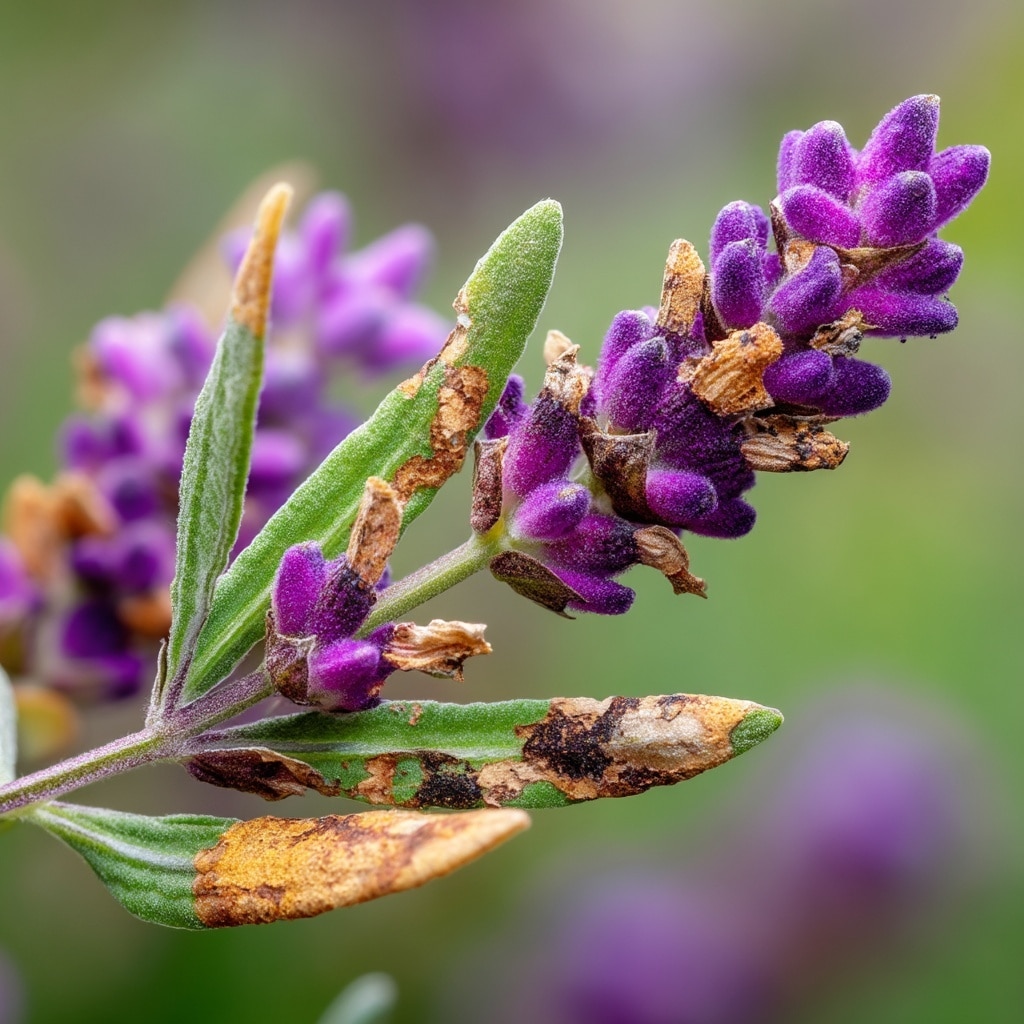
Fungal infections are often the first sign of trouble before root rot sets in. Moist soil, poor airflow, and high humidity create ideal conditions for fungal spores to thrive. For lavender, keeping its roots and surrounding soil dry is the first line of defense.
Spotting the Early Signs
Early fungal issues may show up as:
- Yellowing leaves
- Soft or mushy stems
- A musty smell around the soil
- White or gray patches near the base
If you notice any of these symptoms, act quickly to prevent the infection from spreading.
Treat With Care, Not Chemicals
Choose treatments that are effective but gentle on lavender. Overusing harsh fungicides can do more harm than good. One reliable option is a triple-action garden spray like BioAdvanced 3-in-1, which controls fungus, pests, and mites. Use it according to the label and apply only to affected areas—not the entire plant.
For a more natural approach, try:
- Neem oil (diluted in water)
- A cinnamon and water paste for localized mold
- Sprinkling powdered sulfur at the soil surface
Always remove infected foliage and dispose of it in the trash—not compost. This prevents spores from re-entering your garden.
Prevention Is Key
Improving airflow, watering correctly, and maintaining proper soil conditions can prevent fungal infections altogether. Remember, a healthy lavender plant in the right environment rarely suffers from fungal disease.
Monitoring and Adjusting Lavender Care Routinely
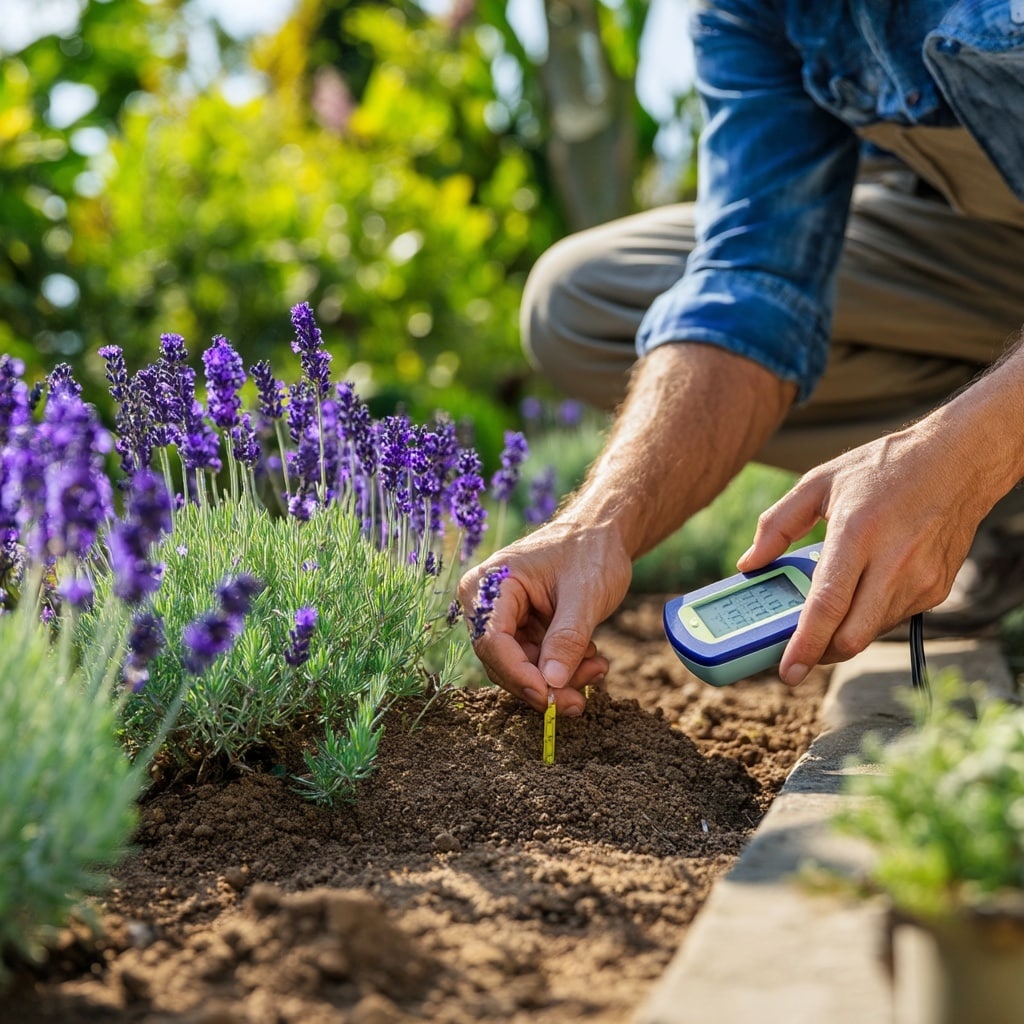
Taking care of lavender isn’t just about sticking to a routine—it’s about being responsive. Changes in weather, light, or even pot size can affect your plant’s health. Regular observation is the best way to catch small issues before they become serious problems like root rot.
Check the Soil Frequently
Get into the habit of checking soil moisture with your finger or a moisture meter every few days, especially after watering or rain. If the soil feels even slightly damp more than a day after watering, you may need to improve drainage or adjust your watering frequency.
Watch the Leaves
Lavender’s leaves are excellent indicators of health. Here’s what to look for:
- Healthy leaves: Silvery-green and upright
- Overwatered: Yellowing or wilting
- Underwatered: Dry, crispy tips
These subtle changes tell you when to cut back on water or when your lavender may need more sun.
Seasonal Adjustments Matter
As temperatures rise or fall, lavender’s water needs shift. During summer, it may need slightly more water—but still not frequently. In cooler or wetter months, reduce watering dramatically, especially for potted plants that dry out more slowly indoors.
Keep a Care Calendar
Create a basic care log or reminder system to stay on top of tasks like pruning, rotating pots for even sun exposure, and checking for pests. You don’t need anything fancy—a notepad or gardening app can do the trick.
Proper Pruning Techniques for Preventing Disease
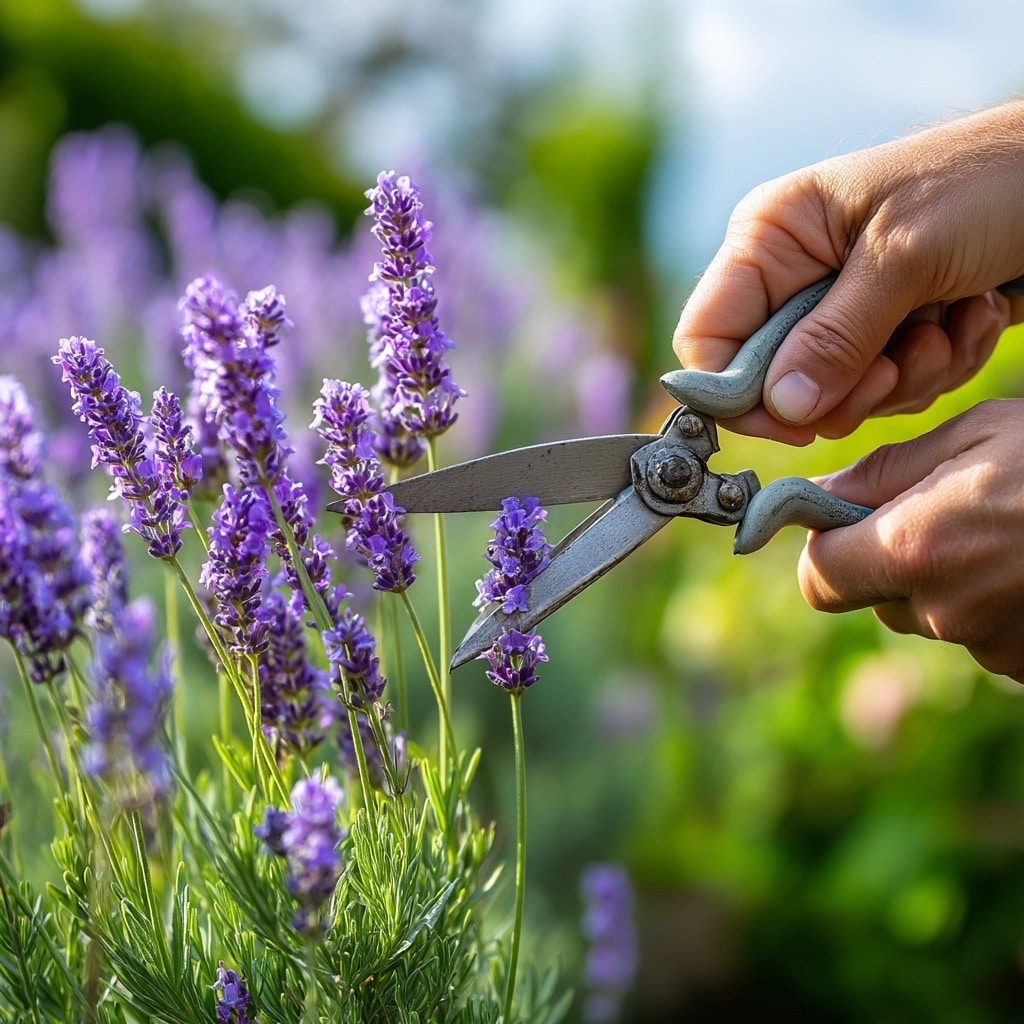
Pruning isn’t just about shaping your lavender—it’s one of the most effective ways to prevent disease, including root rot. By keeping the plant tidy and well-ventilated, you reduce moisture buildup and improve airflow around the base.
When to Prune Lavender
The best times to prune are:
- Spring: After the last frost, to encourage bushy growth
- Late Summer or Early Fall: After blooming, to maintain shape and health
Avoid pruning in late fall if you’re in a cold climate—fresh cuts can be vulnerable to frost damage.
How to Prune for Health
- Use clean, sharp shears to avoid spreading disease.
- Cut back about one-third of the plant, focusing on the soft green stems—never into the woody base.
- Remove all dead, damaged, or moldy growth immediately.
- Dispose of trimmings in the trash if there’s any sign of fungus—don’t compost them.
By regularly pruning your lavender, you encourage strong stems, better air circulation, and less contact between soil and foliage—all factors that reduce the risk of root rot.
Bonus: Boost Blooming and Longevity
Routine pruning also encourages more blooms and prolongs your lavender’s lifespan. It’s a small task with major benefits—not just for aesthetics, but for plant health, too.
Identifying Common Challenges with Lavender
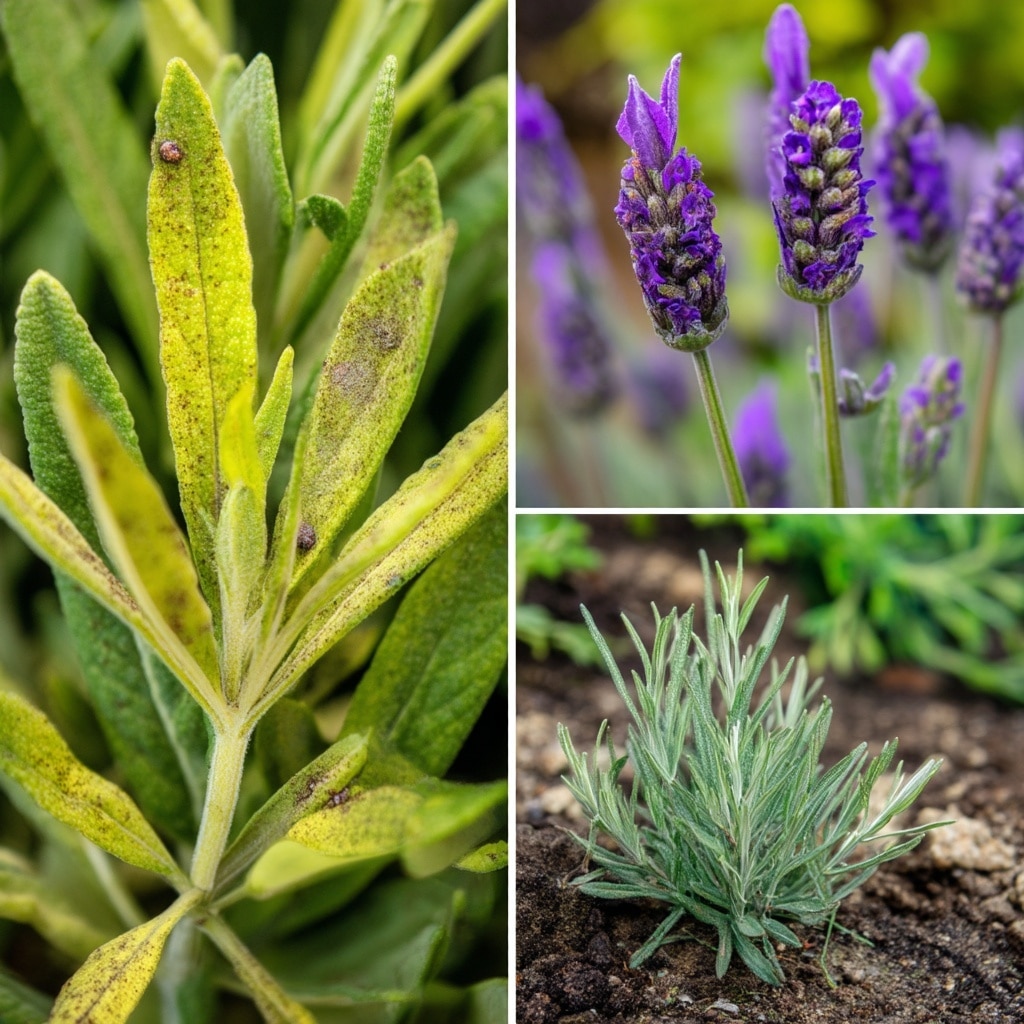
Even with the best care, lavender can run into a few bumps along the way. Knowing what to watch for helps you act fast and keep your plant thriving. Many issues that lead to root rot often begin with these early stress signals.
1. Overwatering
This is by far the most common mistake. Lavender likes dry feet — when the soil stays damp, fungal growth can begin. If you notice wilting despite moist soil or yellowing leaves, it’s time to reassess your watering habits.
2. Poor Drainage
Heavy, clay-based soils or pots without drainage holes trap water around the roots. This stagnant moisture sets the stage for rot. Ensure you’re using well-draining soil and containers that let excess water escape freely.
3. High Humidity
Lavender naturally thrives in dry climates. In humid environments, it’s more prone to fungal problems. Poor airflow makes this worse, especially indoors or in crowded garden beds.
4. Pests
Though not usually severe, pests like aphids, spider mites, and whiteflies can stress your lavender. Stressed plants are more vulnerable to diseases, including root rot. Inspect leaves regularly, especially underneath, and remove pests by hand or with gentle sprays like neem oil.
5. Nutrient Imbalance
Lavender doesn’t need a lot of fertilizer—but too much nitrogen can cause fast, leggy growth that weakens the plant’s structure. Weak plants are more prone to disease. Stick to low-nitrogen, phosphorus-rich fertilizers designed for woody herbs.
Practical Tips for Lavender Success
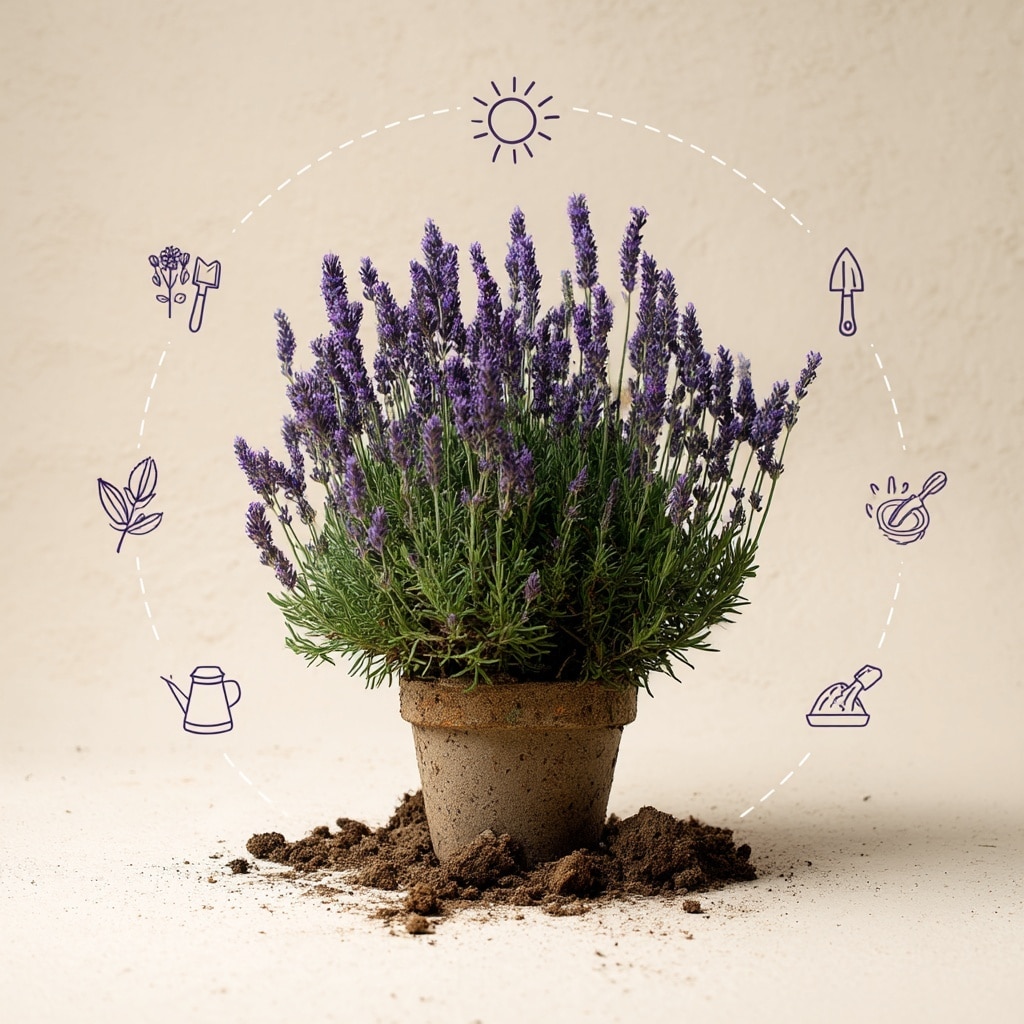
Keeping lavender healthy isn’t complicated—it’s about consistency and creating the right environment. Here’s a quick list of essential tips that make a big difference in preventing root rot and encouraging vibrant growth.
Use the Right Soil Mix
- Choose a well-draining mix with sand or perlite
- Avoid moisture-retaining soils designed for vegetables or houseplants
- Consider cactus or succulent blends for potted lavender
Pick the Perfect Spot
- Outdoors: Full sun, south-facing location with good airflow
- Indoors: Bright window with at least 6 hours of sunlight daily
- Avoid humid rooms like bathrooms or enclosed patios
Water Smarter, Not More
- Allow soil to dry completely between waterings
- Water deeply at the base—never over the foliage
- Use a moisture meter if you’re unsure
Prune Twice a Year
- Light pruning in spring
- Heavier cutback after flowering in late summer
- Always remove dead or diseased growth immediately
Monitor Regularly
- Check for yellowing leaves, wilting, or fungal spots
- Observe moisture levels during seasonal shifts
- Look for pests and deal with them promptly
Use Terracotta Pots for Indoor Plants
- These dry out faster and help prevent moisture buildup
- Always use pots with drainage holes
By following these tips, you’re creating the ideal conditions for your lavender to thrive. Healthy lavender is naturally more resistant to root rot and other stress-related issues, so each small habit you build into your routine really adds up.
Understanding the Importance of Proper Drainage

If there’s one thing that makes or breaks a lavender plant, it’s drainage. Lavender roots hate to sit in wet soil—doing so for even short periods can suffocate the roots and invite fungal infections.
Why Drainage Matters
Lavender is adapted to arid regions with rocky, sandy soil. In its native environment, water drains quickly and doesn’t linger. Recreating that environment—whether in the garden or a container—is key to keeping root rot away.
Poor drainage leads to:
- Standing water at the root zone
- Root suffocation due to lack of oxygen
- Ideal conditions for rot-causing fungi
How to Improve Drainage in Pots
- Use a pot with multiple drainage holes—never one small hole at the bottom
- Choose terracotta or unglazed ceramic pots, which absorb excess moisture
- Add a gritty layer (like coarse sand or pumice) to your potting mix
- Elevate your pot using pot feet or small risers to allow full drainage
Tip: Avoid the myth of using rocks at the bottom of pots without good soil drainage. Water can pool above the rock layer, keeping roots wetter for longer.
Garden Beds Need Good Drainage Too
- If your soil is heavy clay, amend it with sand, gravel, or compost
- Create mounded beds or plant on a slope to encourage runoff
- Use raised beds filled with a custom well-draining mix
Proper drainage sets the foundation for healthy roots and helps prevent nearly all moisture-related problems in lavender.
Selecting the Best Fertilizers for Strong Root Systems
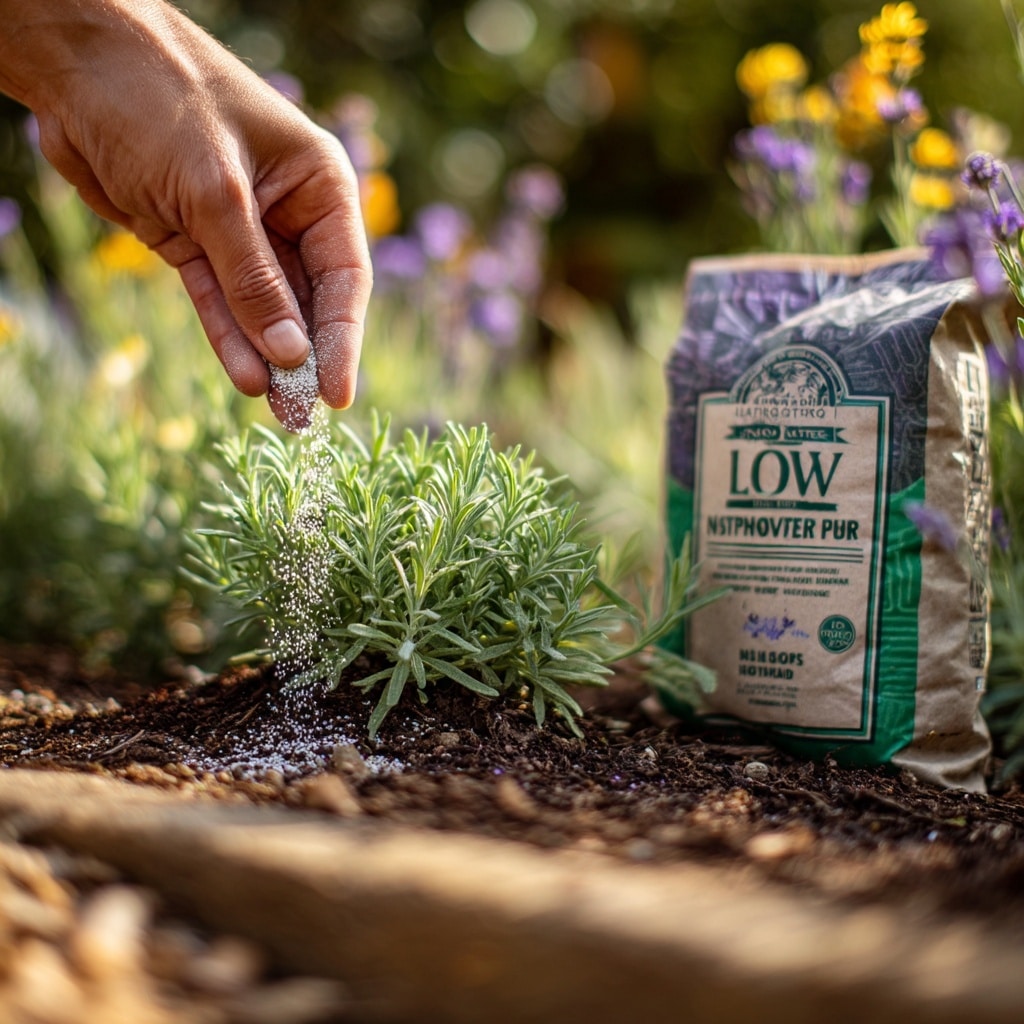
While lavender is known for thriving in poor soils, the right fertilizer—used sparingly—can strengthen root development and increase the plant’s overall resilience. But not all fertilizers are created equal, and using the wrong one can do more harm than good.
Use a Low-Nitrogen, High-Phosphorus Formula
Lavender doesn’t need much nitrogen. In fact, too much of it can lead to weak, leggy growth that the roots can’t support. Instead, choose a fertilizer low in nitrogen (N) and higher in phosphorus (P) to encourage root strength and flower production.
Look for balanced or root-boosting blends such as:
- 5-10-10 (low N, higher P and K)
- Osmocote Smart-Release for Flowers & Vegetables
- Bone meal or rock phosphate for organic phosphorus
Go Slow and Steady
Lavender prefers slow-release or organic fertilizers that break down over time. These reduce the risk of overfeeding and minimize salt buildup in the soil, which can damage delicate roots.
Apply fertilizer in early spring, just as new growth appears, and again lightly after pruning in summer if needed. Avoid fertilizing in fall or winter—when the plant’s growth naturally slows down.
Signs of Over-Fertilization
- Excessive leafy growth with few blooms
- Limp stems that flop instead of standing tall
- A build-up of white crust on the soil surface (salt residue)
If you notice any of these signs, stop feeding immediately and consider flushing the soil with water to remove excess salts.
Creating an Ideal Outdoor Setting for Lavender
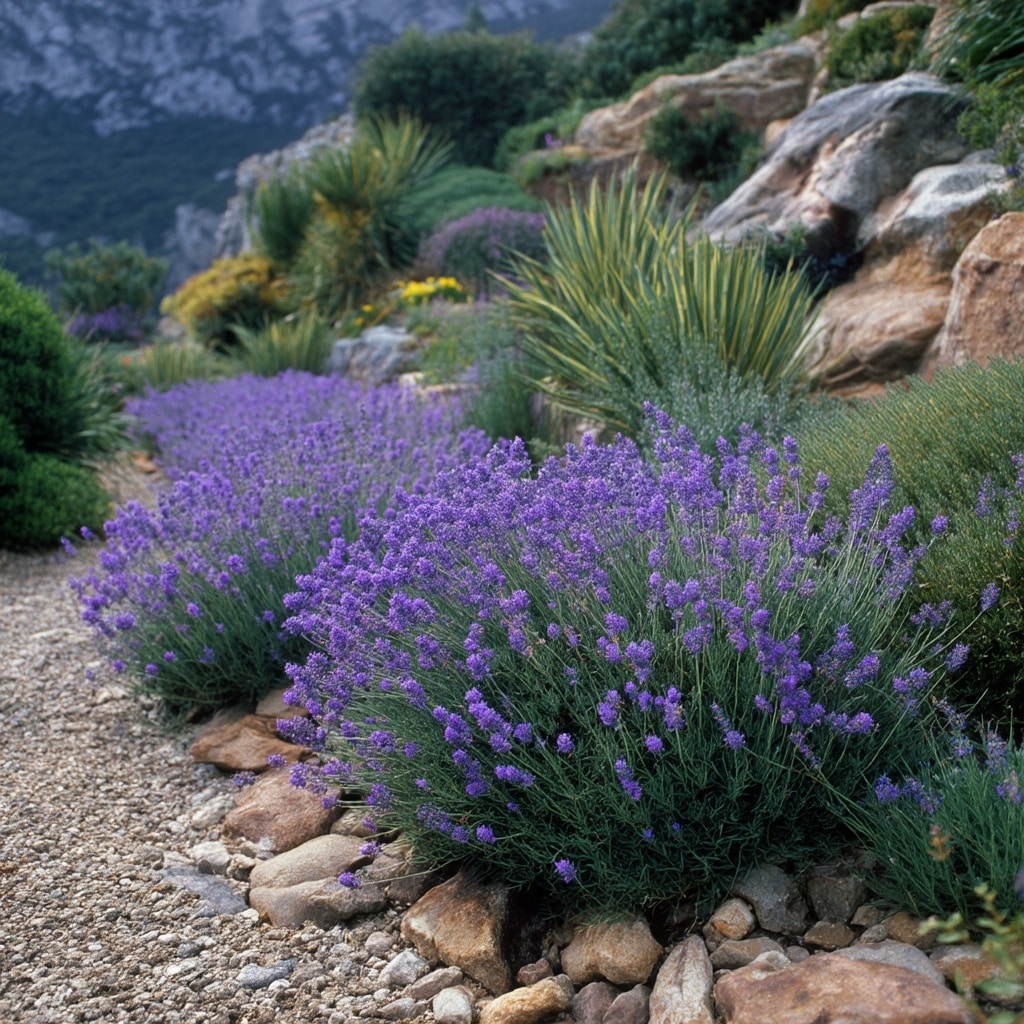
A thoughtfully chosen outdoor location can make all the difference in helping lavender grow strong, bloom abundantly, and stay free of root rot. Mimicking its native Mediterranean environment is the secret to long-term success.
Choose a Sunny, Elevated Spot
Lavender needs full sun—a minimum of 6 hours daily, but more is better. An open, south-facing area is ideal. Avoid planting in low-lying spots where water can collect after rain. Raised beds or gentle slopes work well to ensure runoff.
If you’re planting in rows or groupings, make sure there’s space between each plant (at least 18–24 inches) to allow airflow and prevent excess moisture buildup.
Focus on Drainage and Soil Texture
Outdoor soil should be:
- Light and sandy with good drainage
- Amended with gravel, coarse sand, or compost if it’s heavy or clay-like
- Tested occasionally to keep pH in the 6.5 to 7.5 range—lavender prefers slightly alkaline soil
To keep the base of the plant dry, avoid heavy mulches like bark or wood chips. Instead, use gravel or crushed rock around the base to reflect heat and prevent soggy conditions.
Protecting Young Plants
Newly planted lavender is more vulnerable to root rot. During the first season, be especially careful not to overwater. Lightly mulch with stone or sand to keep the root zone dry and warm.
Once established, lavender becomes much more drought-tolerant and low-maintenance.
Recognizing Symptoms of Root Rot in Lavender
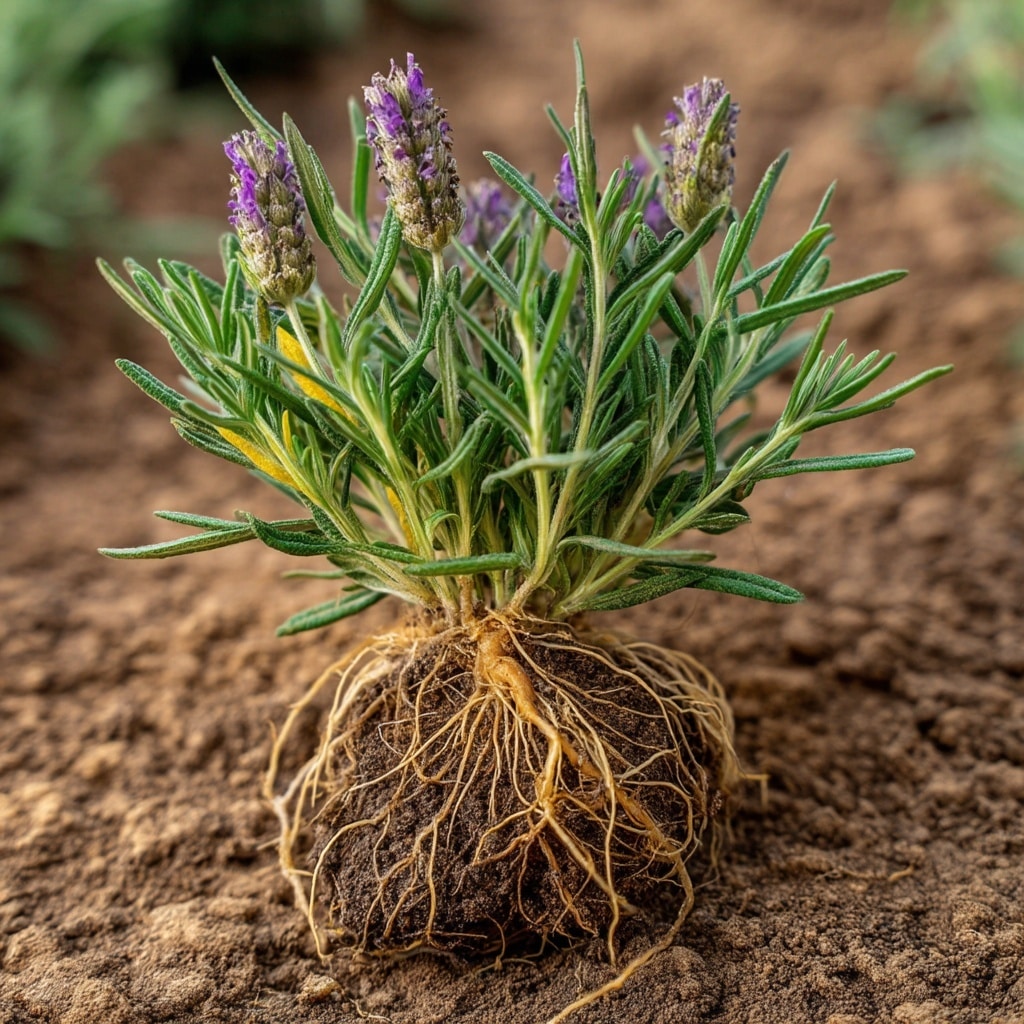
Root rot is sneaky—it often starts below the surface, silently damaging your lavender before you even realize something’s wrong. Catching the early signs can mean the difference between saving the plant or losing it completely.
Above-Ground Warning Signs
The first symptoms usually appear in the foliage:
- Yellowing leaves, especially near the base
- Wilting, even when the soil seems moist
- Stunted growth or lack of new shoots
- Leaves dropping or turning grayish-green
These signs are often mistaken for underwatering, but adding more water will only make things worse.
What’s Happening Below the Soil
If you suspect root rot, gently remove your lavender from its pot or dig around the root zone.
Look for:
- Dark brown or black roots
- Roots that are mushy, soft, or slimy
- A foul, sour smell coming from the soil
Healthy lavender roots should be firm, pale tan or off-white, and free of odor.
What to Do If You Find Root Rot
- Trim off affected roots with sterile scissors
- Replant in fresh, dry, well-draining soil
- Hold off on watering for several days
- Improve drainage or airflow conditions moving forward
Early action can save a struggling lavender plant, especially if some healthy roots remain intact.
Integrating Lavender into a Healthy Garden Ecosystem
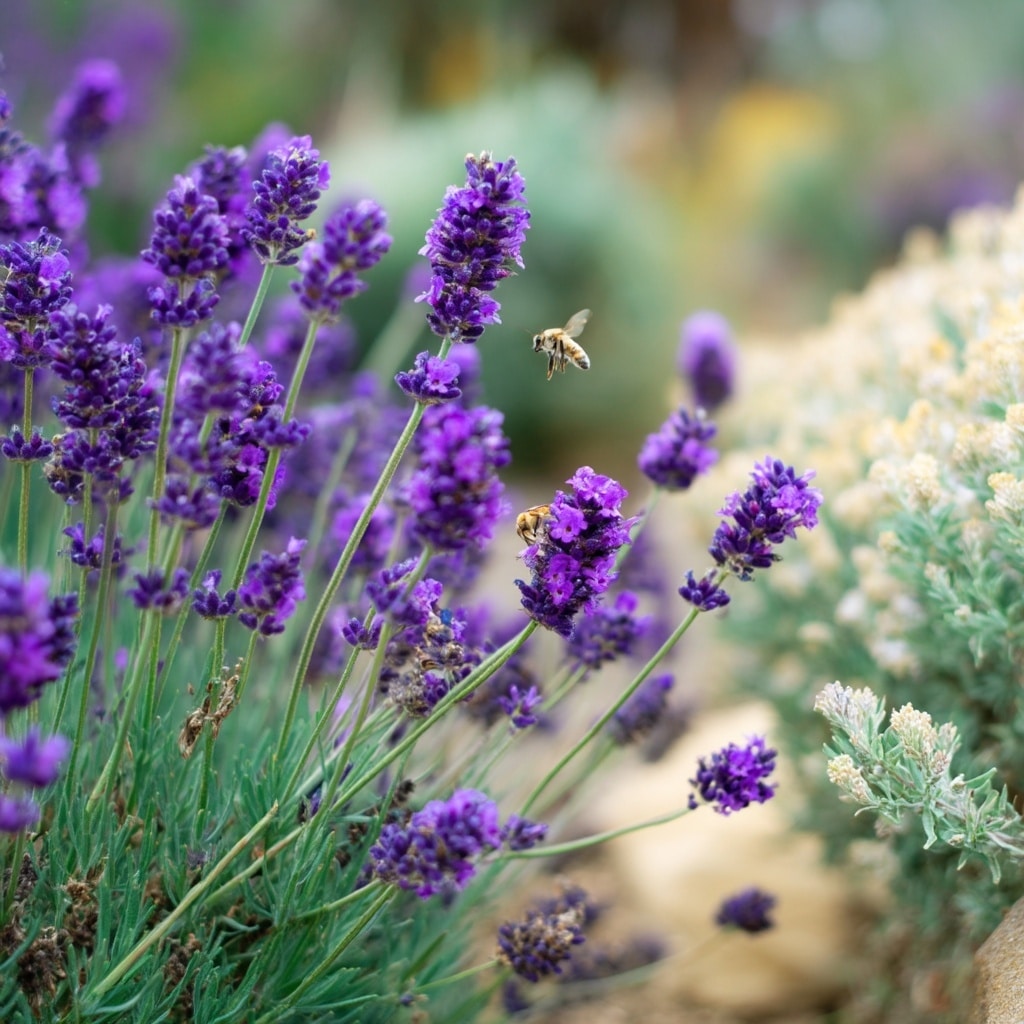
Beyond its beauty and scent, lavender is a powerhouse in the garden. It’s not just about growing a single healthy plant—it’s about how lavender contributes to the wellbeing of your entire garden.
Natural Pest Repellent
Lavender emits a strong fragrance that many unwanted insects dislike, including mosquitoes, moths, and some beetles. Planting it near vegetable gardens, walkways, or patio spaces can help reduce pest pressure naturally—without relying on chemicals.
Its flowers also attract pollinators like bees and butterflies, making it an excellent companion for crops like tomatoes, cucumbers, and squash.
Excellent Companion Plant
Try pairing lavender with other sun-loving, low-water plants such as:
- Rosemary
- Sage
- Thyme
- Echinacea
- Yarrow
These plants share similar care needs—well-drained soil, full sun, and low humidity. Grouping them together simplifies maintenance and keeps the surrounding microclimate drier, which helps reduce the risk of disease.
Improving Soil Health (Indirectly)
While lavender doesn’t actively amend soil like legumes, its deep root system helps aerate the ground, improving drainage in the surrounding area. Over time, this can benefit nearby plants that also dislike wet conditions.
Seasonal Adjustments to Lavender Care

Your lavender’s needs change with the seasons. Adjusting your care routine throughout the year helps maintain healthy roots and avoids the common pitfalls that lead to disease, especially root rot.
Spring
- Begin watering as new growth appears, but only when the soil is dry
- Apply a light dose of slow-release fertilizer
- Prune lightly to shape and encourage bushier growth
- Watch for pests as the weather warms
Summer
- This is lavender’s peak growing season—ensure it gets 6–8 hours of full sun daily
- Water deeply, but space it out—once every 7–10 days in most climates
- Deadhead spent blooms to encourage reblooming
- Improve airflow with spacing and light pruning if humidity rises
Fall
- After the final blooms fade, prune more heavily to prepare the plant for dormancy
- Gradually reduce watering as temperatures drop
- Stop fertilizing—your plant won’t need it during the colder months
Winter
- Avoid watering unless the soil is bone dry (especially for indoor pots)
- Protect outdoor lavender in zones 5–7 with burlap wraps or mulch—but don’t let mulch touch the stems
- For potted lavender, move it to a cool, bright area like a sunroom or unheated porch
- Monitor for mold or mildew in areas with poor air circulation
Real-Life Examples of Overcoming Lavender Root Rot
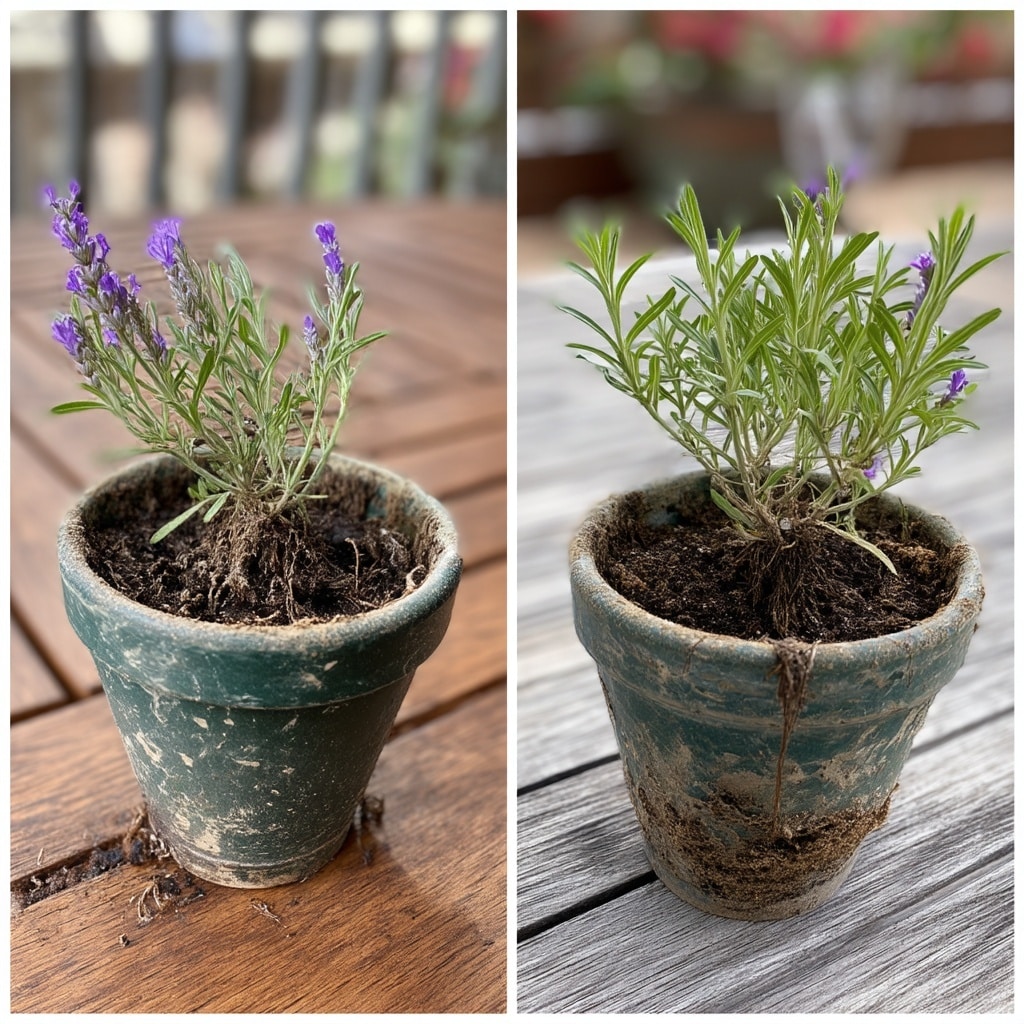
Even the most experienced gardeners have struggled with lavender and root rot at some point. The good news? Many of these plants were saved with quick action and a few smart adjustments.
Emily from Oregon: “My Lavender Came Back!”
Emily noticed her potted lavender was wilting, even though she’d just watered it. When she unpotted it, the roots were brown and mushy. She:
- Cut off all rotted roots with sterilized scissors
- Replanted in a terracotta pot with cactus soil mix
- Added coarse sand and perlite for better drainage
- Held off on watering for 10 days
Within 3 weeks, new growth emerged. Now, she checks the soil with a meter before every watering.
Daniel from Texas: “Raised Beds Made All the Difference”
Daniel planted lavender in heavy clay soil. After a rainy spring, several plants began to die off. Learning from his mistake, he:
- Built a raised bed filled with sandy loam and gravel
- Planted new lavender on a slight slope for runoff
- Applied gravel mulch to prevent moisture at the base
The new setup not only saved his remaining plants, but they also flowered more abundantly than ever that summer.
Sarah from the UK: “Neem Oil Helped Me Beat the Mold”
Sarah grows lavender indoors and noticed fuzzy white mold around the soil surface. She:
- Improved airflow by moving the pot to a brighter window
- Sprayed the soil and base with diluted neem oil
- Switched to a smaller pot with better drainage
She hasn’t had a recurrence since and now uses moisture meters to guide her watering.
Embracing the Lavender Lifestyle for a Thriving Plant
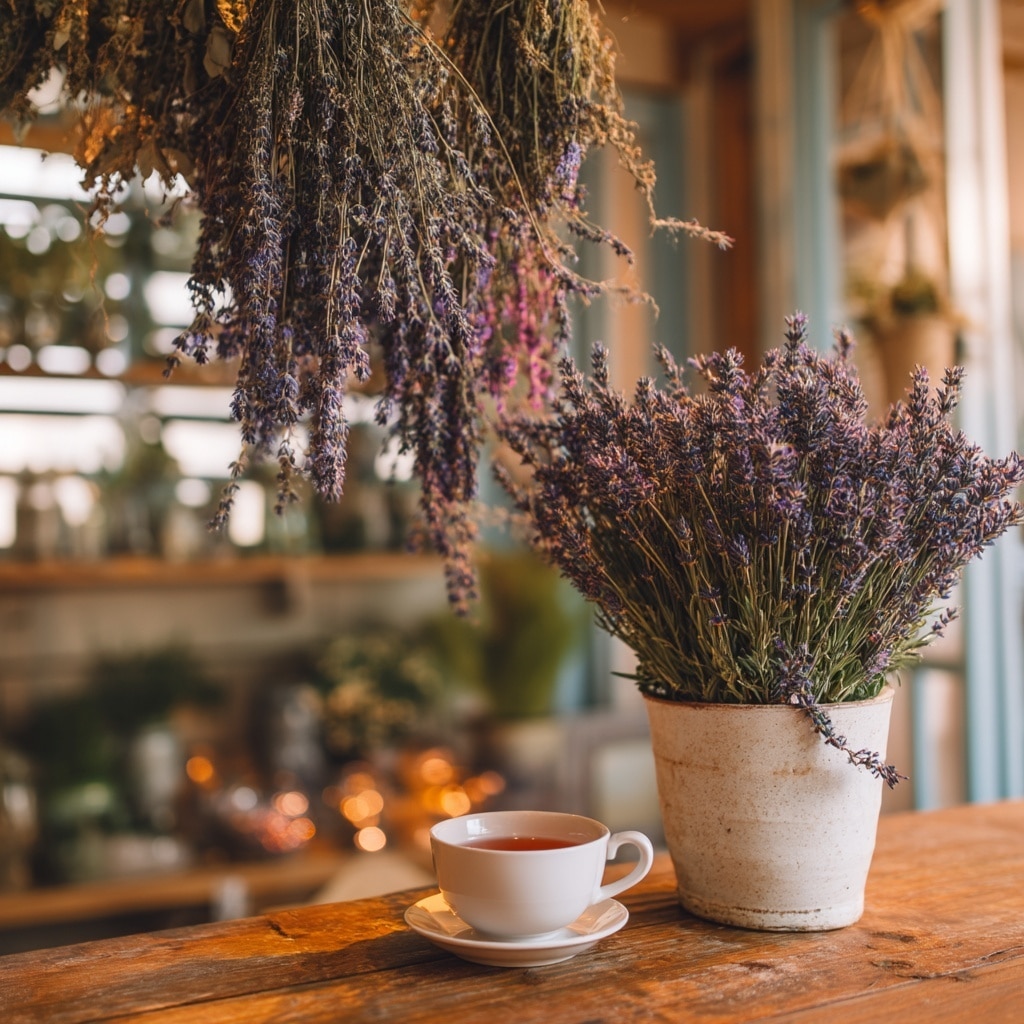
Caring for lavender is more than a gardening chore — it’s a lifestyle that brings calm, beauty, and purpose to your space. When you understand its needs and rhythms, lavender becomes not just a plant, but a part of your home’s identity.
A Plant with Purpose
Beyond its visual appeal, lavender offers so much:
- Its blooms can be dried for sachets, teas, and homemade soaps
- The essential oils have natural calming properties
- It’s a beautiful, low-maintenance addition to pollinator-friendly gardens
When your lavender is healthy, it becomes a multi-functional asset—decorative, aromatic, and therapeutic.
The Rewards of Attentive Care
Tuning into your lavender’s signals—whether it’s through wilting leaves or blooming spikes—helps you become a more mindful, observant gardener. And the more consistent you are with proper soil, watering, and sun exposure, the less you’ll have to intervene later.
Many gardeners find that maintaining lavender leads to better habits with other plants as well. It’s a teacher in its own right.
From One Plant to a Garden Theme
Lavender often becomes the cornerstone of themed gardens: Mediterranean, herbal, drought-tolerant, or pollinator-specific. Once you master its care, it opens doors to exploring other companion plants with similar needs and aesthetic charm.
Becoming Proactive in Lavender Plant Maintenance

The best way to prevent root rot—and other common issues with lavender—is to take a proactive approach to care. Rather than reacting to problems as they arise, build habits that keep your plant healthy year-round.
Set a Simple Routine
You don’t need a complicated system—just a few reminders will do:
- Check soil moisture weekly (use your finger or a moisture meter)
- Inspect for pests during watering or pruning
- Rotate pots monthly to encourage even light exposure
- Record pruning and fertilizing dates so you stay on schedule
Consistency in these areas creates a healthy environment where root rot is far less likely to occur.
Invest in the Right Tools
Having a few reliable tools on hand makes lavender care easier and more efficient. Consider:
- Moisture meter for accurate watering decisions
- Sharp pruning shears to keep cuts clean and reduce disease risk
- Terracotta pots for better breathability
- Grow lights if sunlight is limited indoors
These small investments prevent big problems—especially for potted lavender or plants in climates that don’t naturally suit them.
Know Your Plant
Every lavender variety is slightly different. English lavender, for example, is more cold-tolerant, while Spanish and French varieties prefer milder winters. Learning about your specific variety helps tailor your care and improves your odds of long-term success.
Leveraging Technology for Lavender Plant Health
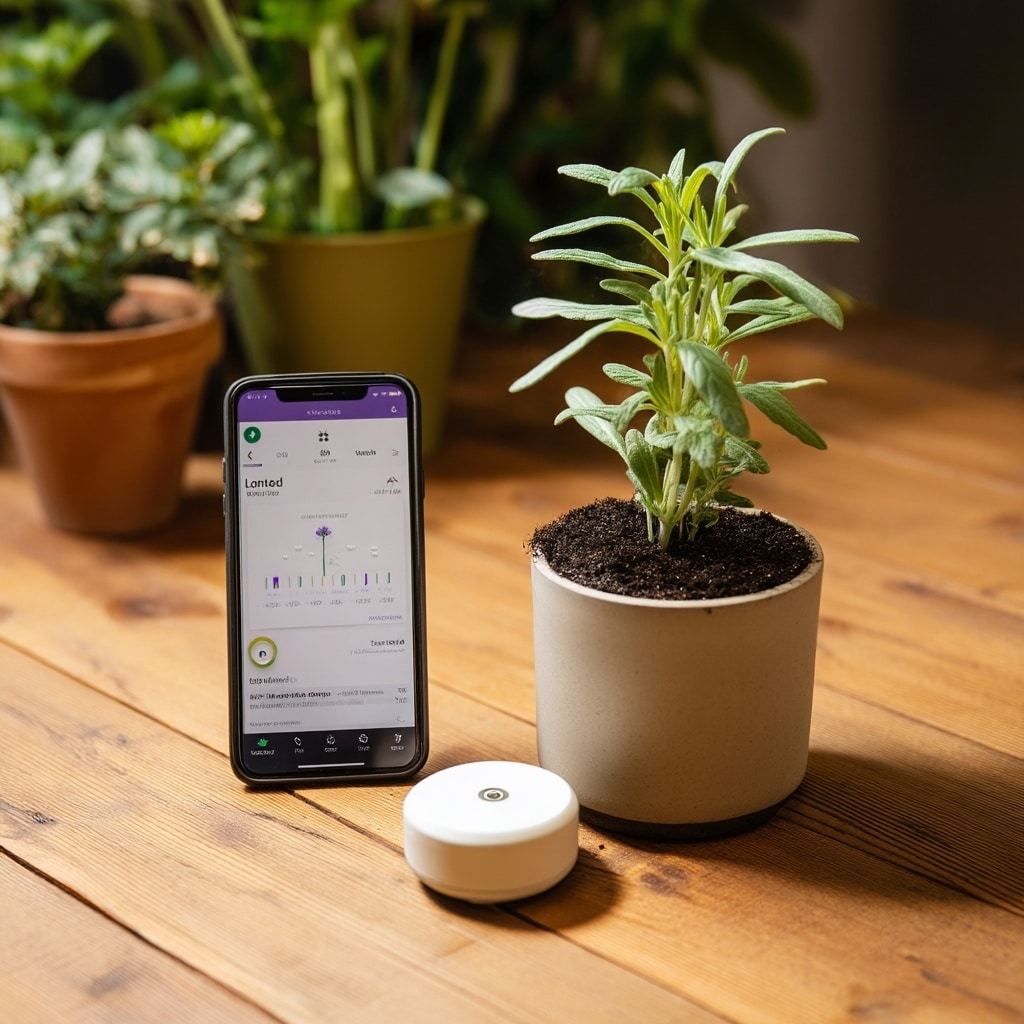
Technology isn’t just for indoor plants or high-tech greenhouses — it can be a game-changer for everyday lavender growers. With the right tools, you can monitor key factors like moisture, sunlight, and temperature with surprising accuracy.
Smart Moisture Meters
Digital soil moisture meters like the XLUX T10 or the ECOWITT WH51 connect to your smartphone or display panel, making it easy to know when your lavender really needs water.
These tools:
- Help avoid overwatering
- Track trends over time
- Send alerts if soil stays wet for too long
Perfect for busy gardeners who don’t want to rely on guesswork.
Grow Lights and Sunlight Trackers
Indoor growers often struggle with light, especially in winter. Apps like Plant Light Meter (iOS) or Lux Light Meter (Android) help you measure real-time brightness to ensure your lavender gets enough direct light.
And if your space falls short, LED grow lights with full-spectrum bulbs can simulate natural sunlight.
Plant Care Apps
Apps like Planta, Vera, or Gardenate let you:
- Set custom watering and pruning reminders
- Track fertilizer schedules
- Log growth photos
- Get care recommendations tailored to lavender
These digital helpers act like a personal garden coach, guiding you to stay consistent with care routines.
Utilizing Mulches and Top Dressings for Healthy Soils
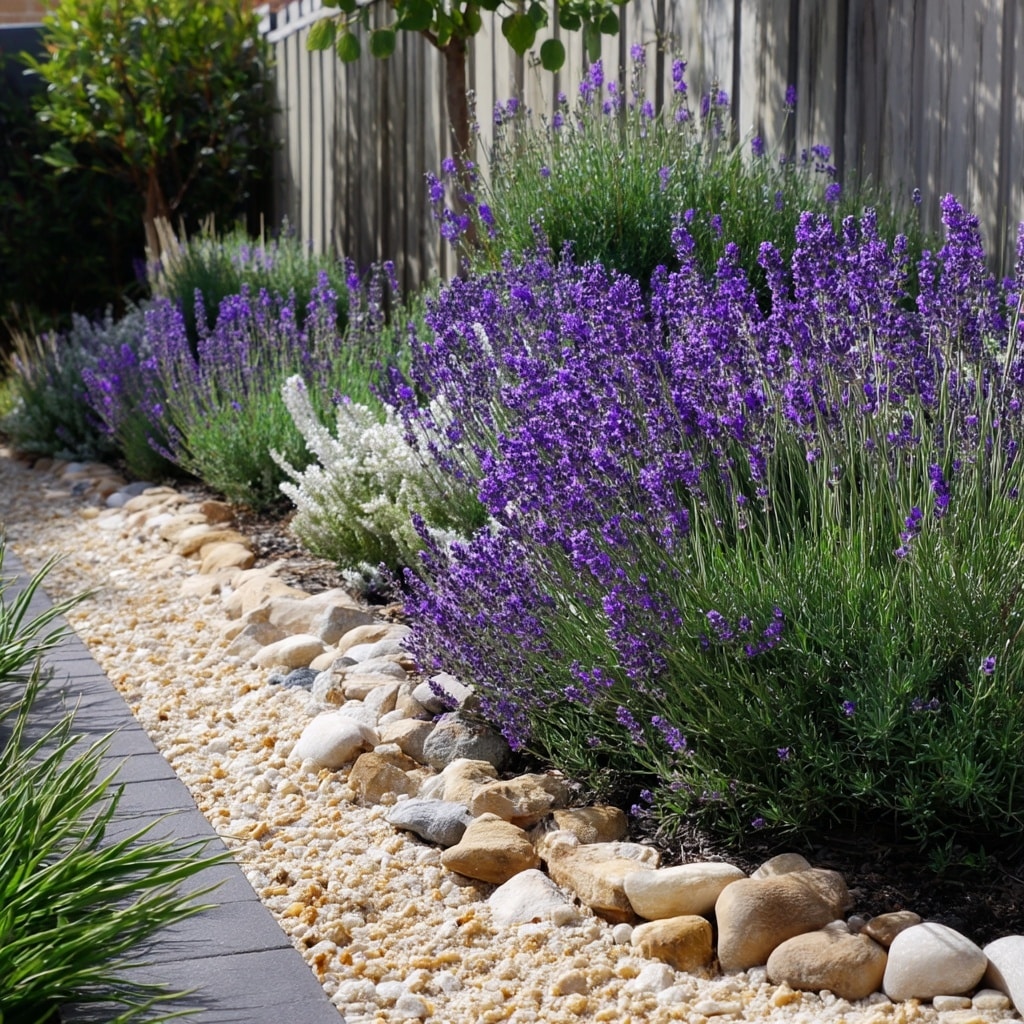
Mulching is often associated with moisture retention—but for lavender, it plays a slightly different role. The right type of mulch can regulate soil temperature, improve drainage, and even reduce the chance of fungal disease around the base of the plant.
Use the Right Mulch
Avoid traditional organic mulches like bark chips, straw, or compost near lavender’s crown. These materials hold moisture and can trap dampness around the base—creating an ideal environment for rot.
Instead, opt for:
- Crushed gravel or pea stone
- Coarse sand
- Pumice or lava rock
These materials allow water to pass through quickly and reflect heat back toward the plant, simulating lavender’s natural growing conditions.
Top Dressing for Potted Lavender
For potted plants, a thin layer of gravel or horticultural grit on the surface of the soil helps:
- Keep the top layer dry
- Prevent soil compaction
- Discourage fungus gnats and surface mold
It’s an easy upgrade that helps reduce moisture-related problems, especially indoors or in humid climates.
Avoid Over-Mulching
Too much mulch—even the right kind—can smother roots. Aim for a 1–2 inch layer around the base of your lavender, keeping it away from direct contact with the stems.
Combating Root Rot with Organic Solutions

If you prefer to garden naturally, there are several organic ways to prevent and even treat early signs of root rot in lavender. These methods support the plant’s immune system and promote healthier, more resilient roots—without resorting to synthetic chemicals.
Boost Soil Health with Beneficial Microbes
Soil life matters. Adding beneficial fungi and bacteria can create a strong underground defense against harmful pathogens.
Try:
- Mycorrhizal fungi: Help lavender roots absorb nutrients and fight off rot-causing organisms
- Compost tea: A nutrient-rich, microbe-heavy liquid that strengthens soil life and suppresses disease
- Worm castings: Add gentle nutrition and microbial diversity
These amendments can be added during planting or as a top dressing around existing plants.
Use Natural Anti-Fungal Treatments
For early-stage root rot or general prevention, consider:
- Cinnamon powder: A natural fungicide—sprinkle a light dusting over the soil
- Neem oil: Diluted and sprayed at the base (not directly on lavender leaves) to target fungal spores
- Hydrogen peroxide (3%): A diluted mix (1 part peroxide to 4 parts water) can be used to drench the soil and kill fungus—but only sparingly
These treatments are safe when used correctly and won’t harm your plant’s ecosystem.
Focus on Prevention, Not Just Reaction
Organic solutions work best as part of a broader care strategy. By combining them with good drainage, proper watering, and routine observation, you create a low-risk environment where root rot is far less likely to take hold.
Lessons Learned from Lavender
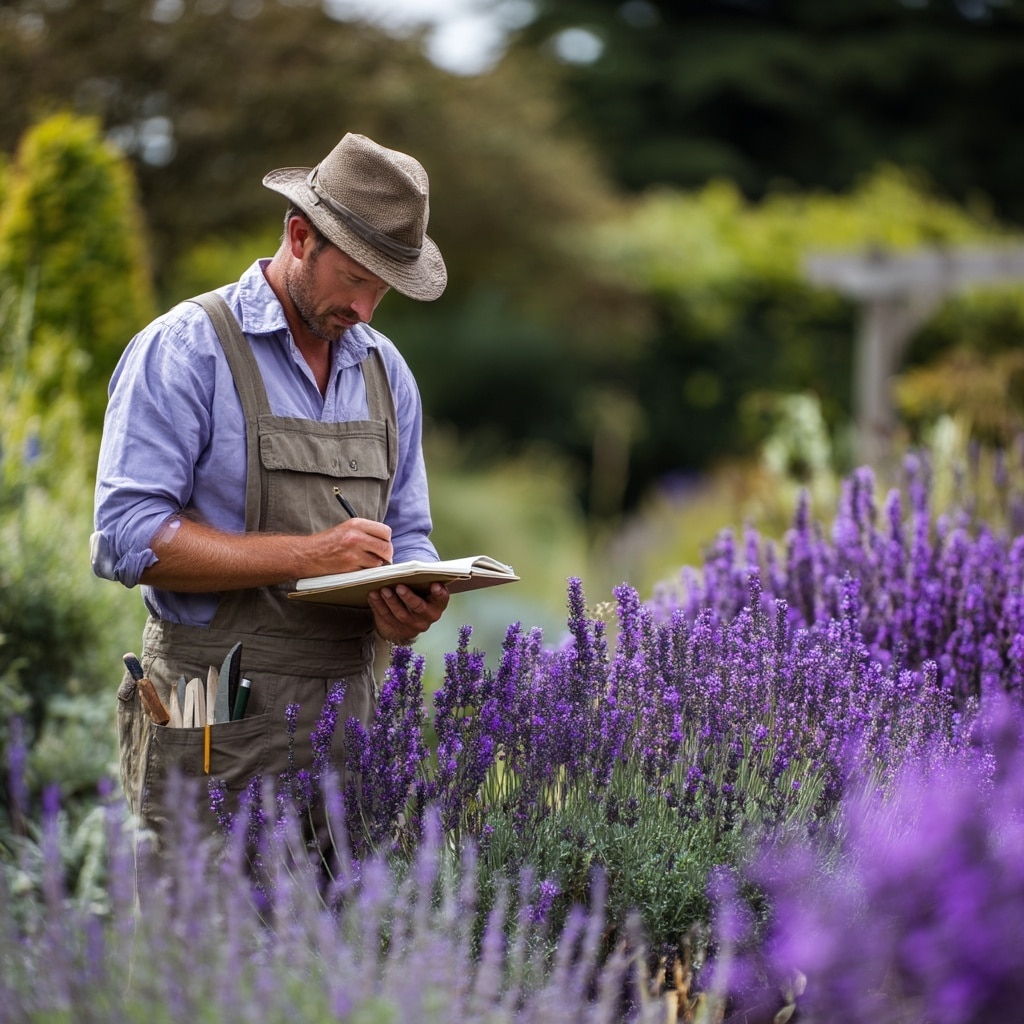
Growing lavender teaches more than just plant care — it fosters patience, observation, and balance. It rewards consistency and punishes shortcuts, but in doing so, it shapes better gardeners.
Less Is Often More
With lavender, it’s not about doing more — it’s about doing just enough. Overwatering, overfeeding, or overhandling almost always backfires. Lavender thrives when given space, light, and time, a reminder that minimalism often yields the best results.
Trust Your Observations
There’s no perfect watering schedule or universal soil mix — what works in one garden might fail in another. Lavender teaches you to watch, feel, and adapt, based on what the plant is telling you through its color, posture, and growth.
Small Changes Make a Big Difference
Switching to a better pot, adjusting your watering method, or changing the soil mix can rescue a plant on the brink. Lavender care isn’t about dramatic fixes — it’s about noticing what’s slightly off and making steady improvements.
A Gateway to Better Gardening
Once you’ve mastered lavender, you gain tools that apply to many other plants — especially those that prefer similar dry, sun-soaked conditions. You’ll understand drainage better, be more cautious with watering, and recognize early signs of stress across the board.
Charting a Course for Continuous Learning in Gardening

Gardening isn’t about mastering every plant at once — it’s about getting to know each one, season by season. Caring for lavender offers the kind of hands-on experience that turns casual plant lovers into confident growers.
Every Plant Is a Learning Opportunity
You might lose a lavender to root rot once. But after that, you’ll remember to check soil moisture more often, adjust your watering technique, or improve drainage. These lessons carry over to every herb, flower, or vegetable you grow next.
Join Gardening Communities
There’s a lot to learn just by connecting with others. Online forums, local garden clubs, and even plant-focused subreddits are full of people who’ve faced (and fixed) the same issues. Many lavender growers swear by tricks you won’t find on the label—like adding charcoal to the soil or using gravel mulches to reflect light and heat.
Sharing experiences keeps you growing, even when challenges pop up.
Keep an Open Mind
There’s no single “right” way to care for lavender. What matters is understanding your plant, your environment, and your goals. Be flexible, experiment, and adjust. The more tuned in you become, the less likely root rot—or any issue—will surprise you again.
Conclusion
Lavender is a joy to grow, but like any plant, it asks for specific care—especially when it comes to avoiding root rot. From choosing the right soil and pot, to watering with intention and adjusting care by season, every small habit makes a difference.
By staying proactive, observing your plant closely, and learning as you go, you’ll create the ideal environment for lavender to thrive. And in return, you’ll enjoy its fragrance, beauty, and calm presence in your home or garden for years to come.






